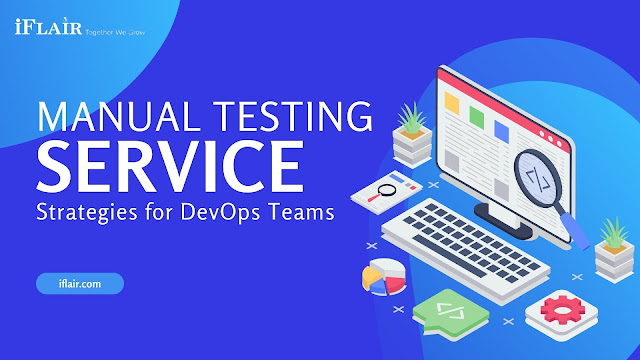Manual Testing Service Strategies for DevOps Teams
In today's fast-paced software development landscape, where continuous integration and continuous delivery (CI/CD) are the norm, DevOps teams play a crucial role in delivering high-quality software at an accelerated pace. While automation testing has gained popularity, manual testing services remain an indispensable component of the quality assurance process. Manual testing services, also known as Manual QA Testing Services, Manual QA Services, or Manual Software Testing, provide a human touch that complements automation testing. In this blog, we will explore the importance of manual testing services in DevOps and strategies to effectively incorporate them into your development pipeline.
Understanding Manual Testing Services
Manual testing services involve the systematic and meticulous testing of software applications by skilled testers who simulate real user interactions. This approach helps identify subtle usability issues, accessibility concerns, and non-functional aspects that automated tests may overlook. Manual QA testing solutions requires human judgment, creativity, and intuition to uncover defects that automated scripts may miss.
Why Manual Testing Services are Vital in DevOps
User-Centric Testing: Manual testing services focus on the end-user experience. Testers can evaluate how an application behaves in real-world scenarios, ensuring it meets user expectations.
Exploratory Testing: Testers can conduct exploratory testing, where they actively explore the application to uncover defects that might not be covered by predefined test cases.
Usability Testing: Manual QA testing services assess the application's usability, identifying design flaws and suggesting improvements to enhance user satisfaction.
Accessibility Testing: Ensuring that your Manual Software Testing is accessible to all users, including those with disabilities, is essential. Manual testers can validate compliance with accessibility standards.
Compatibility Testing: Manual testers can verify the compatibility of your application across different browsers, devices, and operating systems.
Strategies for Effective Manual QA Testing Services in DevOps
Define Clear Objectives: Before embarking on manual testing, establish clear objectives and test cases. Document what you want to achieve with manual testing services and outline specific scenarios to be tested.
Collaborative Approach: Foster collaboration between development, testing, and operations teams. Effective communication ensures that issues found during manual testing are addressed promptly.
Test Early and Continuously: Integrate manual testing services into your CI/CD pipeline. Conduct manual tests alongside automated tests throughout the development cycle to catch defects early.
Test Matrix: Create a test matrix that outlines different test scenarios, including user roles, environments, and data inputs. This matrix helps testers cover a wide range of scenarios efficiently.
Risk-Based Testing: Prioritize testing efforts based on the potential impact and likelihood of defects. Focus on critical areas that could impact the user experience or business processes.
Automation Where Possible: While manual testing is essential, identify repetitive and time-consuming tasks that can be automated. This frees up testers to focus on exploratory testing and high-risk areas.
Test Data Management: Ensure that test environments have the necessary data for testing. Testers should have access to accurate and representative data to simulate real-world scenarios.
Test Documentation: Document test cases, test results, and any defects found during manual testing. This documentation is valuable for tracking progress and facilitating collaboration.
Continuous Learning: Invest in training and skill development for manual testers. Staying up-to-date with the latest testing techniques and tools is crucial for maintaining testing excellence.
Conclusion
In the realm of DevOps, where speed and quality go hand in hand, manual testing services remain an integral part of the software development process. Manual QA testing services, with their ability to assess usability, accessibility, and real-world user experiences, complement automated testing efforts. By following the strategies outlined in this blog, DevOps teams can effectively incorporate manual testing services into their development pipeline, ensuring the delivery of robust and user-friendly software.
For more information on Manual Testing Services, visit iFlair's Manual QA Testing Service.




Comments
Post a Comment